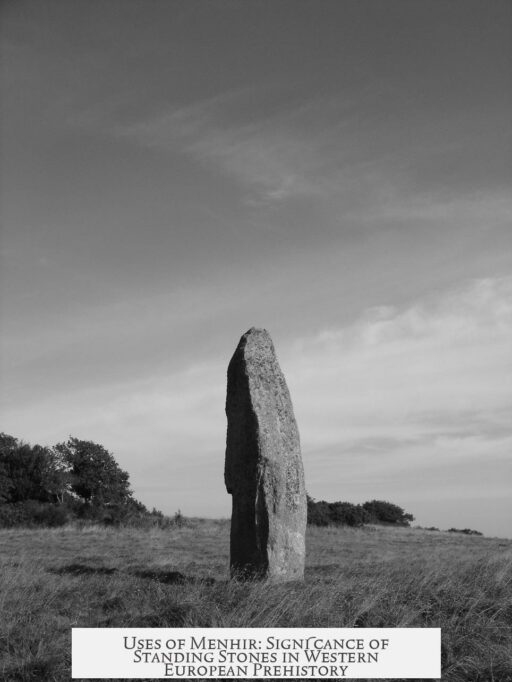Menhirs, or standing stones, in Western European prehistory served multiple potential purposes, though their exact uses remain partly speculative. They appeared mainly during the Early Neolithic period, scattered across various settings, particularly in France and surrounding regions.
Menhirs existed as single stones, groups, or arranged alignments. This variation suggests different meanings or functions depending on their context. Unlike megalithic burial monuments such as dolmens or those linked to the Funnel Beaker Culture, menhirs typically lack direct associations with burials. This absence complicates understanding their precise cultural significance.
Evidence supports that menhirs likely did not serve primarily as grave markers, except in certain regions and later times. For instance, in Ireland, many standing stones feature ogham inscriptions naming individuals, which points to a use as grave markers during subsequent periods. However, this is not a universal explanation across Western Europe.
One notable aspect is the social and political implication of menhirs. The deliberate destruction of a large menhir implies the stone’s symbolic significance sparked conflict or dispute. This suggests that menhirs embodied status or power and could have represented clans, tribes, or political groups, resembling the role monumental structures played in later medieval societies.
Overall, while the menhirs’ exact functions are elusive, their presence as prominent, sometimes contested landmarks indicates they carried symbolic weight beyond funerary purposes. They may have acted as territorial markers, symbols of group identity, or objects tied to ritualistic practices.
- Menhirs date mainly from the Early Neolithic in Western Europe, especially France.
- They appear singly, in clusters, or alignments with varying potential meanings.
- Lack of burial association distinguishes them from other megalithic monuments.
- Some menhirs symbolize status, clan identity, or political power.
- In Ireland, later standing stones with ogham inscriptions likely served as grave markers.
What time period were menhirs mainly erected in Western Europe?
Menhirs were mainly erected during the Early Neolithic period. They appeared in a variety of settings across Western Europe, especially in regions like France.
Were menhirs used as burial monuments?
Menhirs are generally not linked to burial. Unlike dolmens or megalithic tombs, menhirs lack associated burial evidence, though some debate remains, especially about British stone circles.
What does the deliberate destruction of some menhirs suggest?
Deliberate destruction of a large menhir implies the stone held contested meaning. This suggests menhirs conveyed status or power, possibly symbolizing clans or political groups.
Were menhirs used uniformly across all regions?
No, some menhirs stood alone, others formed groups or alignments. These different arrangements likely had varied meanings depending on location and culture.
Could menhirs have marked graves in any regions?
In Ireland, some later standing stones may have served as grave markers. This is supported by ogham inscriptions often found on these stones that spell out names.



